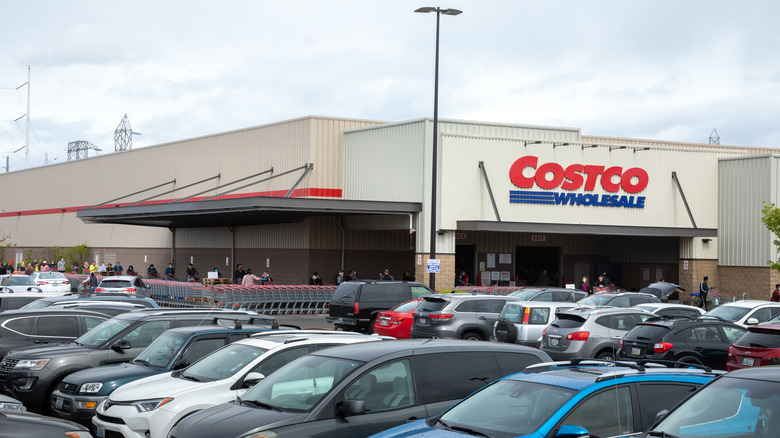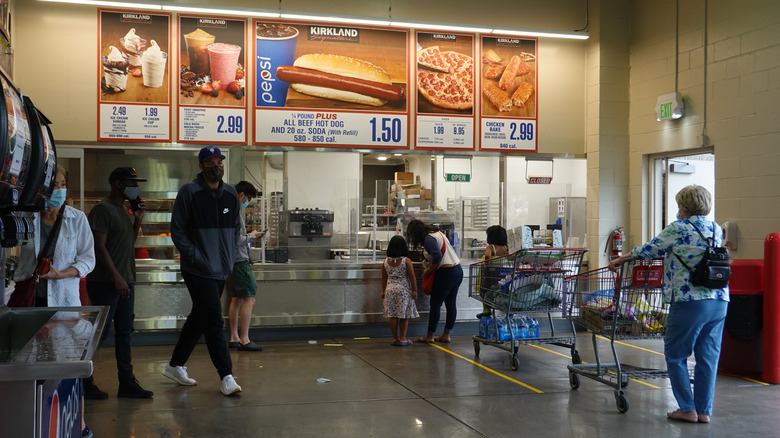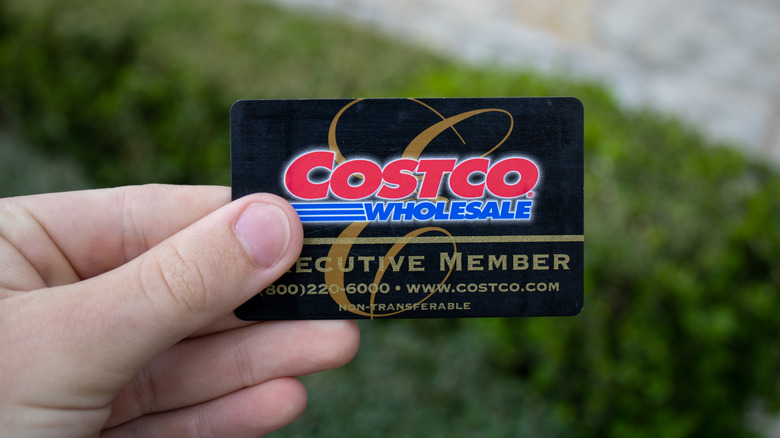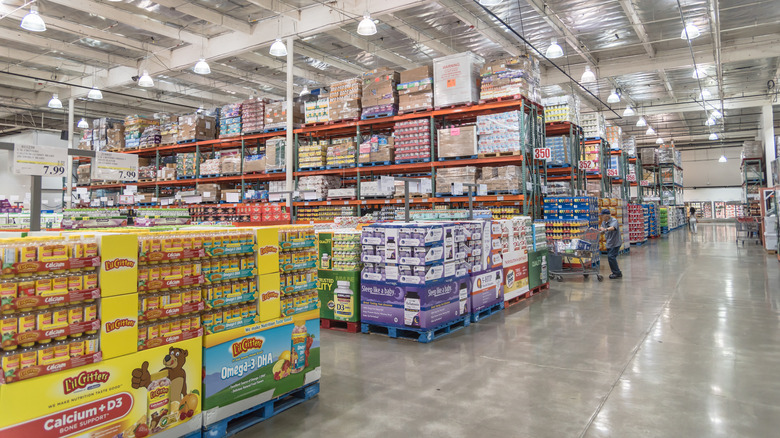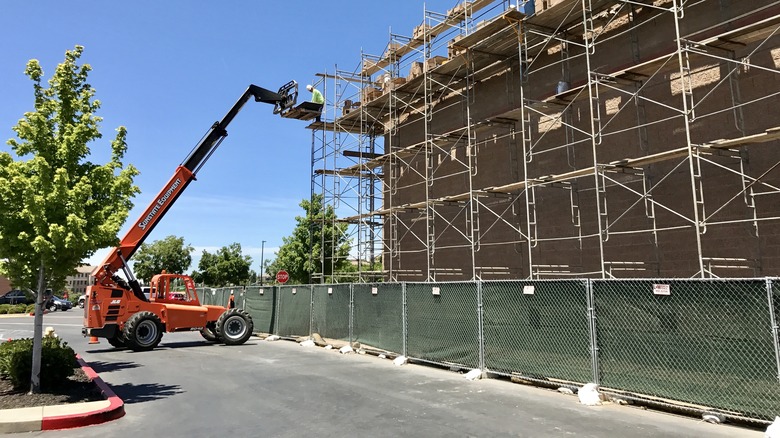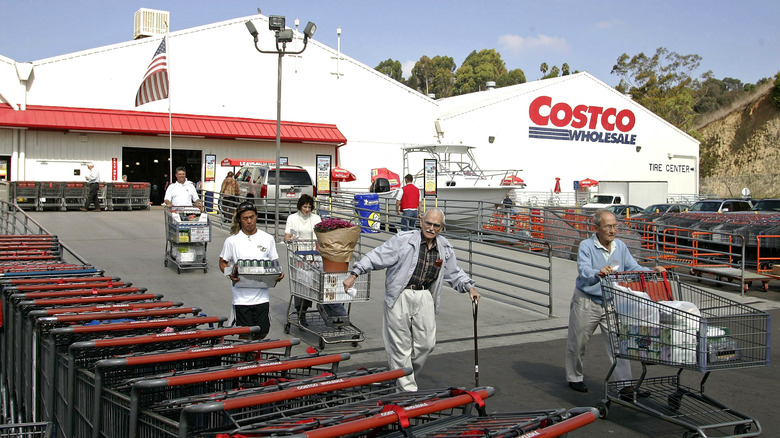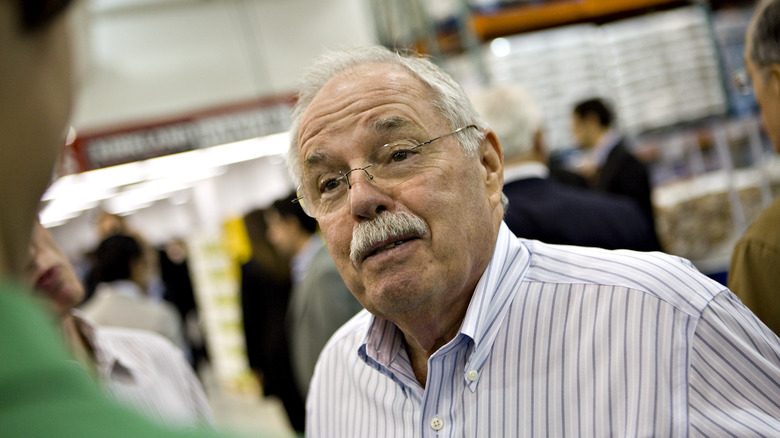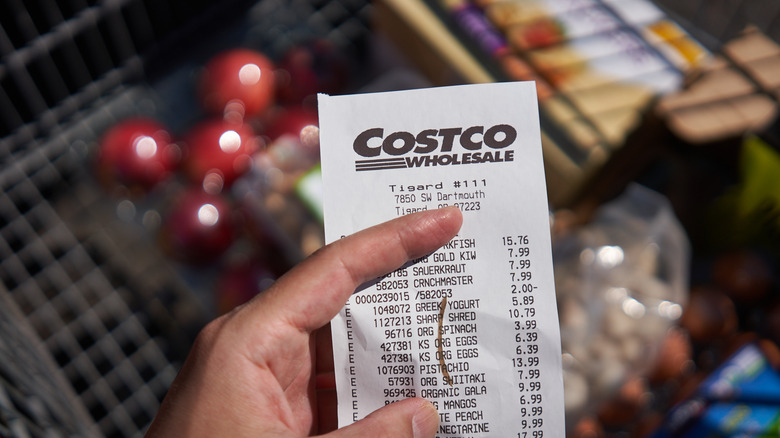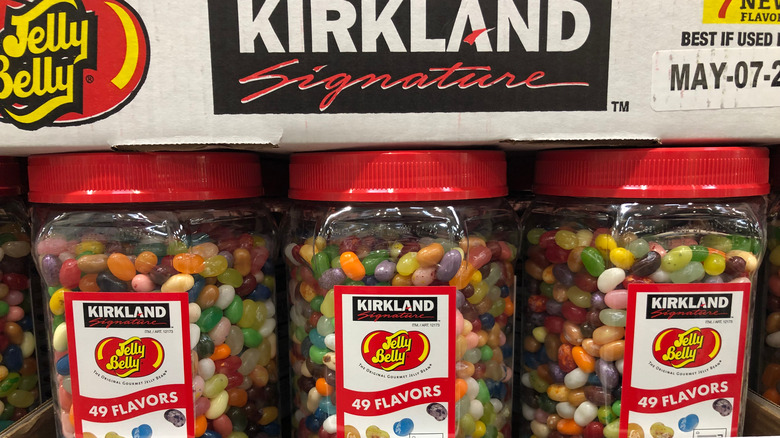The Untold Truth Of The First Costco
Costco has become one of the most popular businesses in the U.S., with a dedicated customer base who crowd into stores daily to find just about everything they need, from products to services. What customers see now, however, is very different from what the first Costco was like in 1983.
While shoppers now are used to seeking out food samples, picking up rotisserie chickens, and looking for the symbols on price tags that indicate an item will be discontinued, the very first Costco was nothing like that. The inaugural Costco was truly a wholesale warehouse store meant to serve the business community, and it underwent fast changes to allow the customer base to expand.
Changes to the way a business works are nothing new, but the transformation from one warehouse that restricted membership, to a massive, international chain of stores was a sight to behold. Here's the untold truth of the first location of an immensely popular company.
The first Costco didn't have a food court at first
When the first Costco location opened in Seattle, Washington, it really was just a membership warehouse with goods for business owners (via SeattlePI). You couldn't buy groceries there, and fresh foods were just not in the plan. Letting people eat lunch or dinner onsite wasn't customary until Hebrew National set up a hot dog cart outside a San Diego Costco in 1985. (You'll find some sources such as Reader's Digest that say 1984, by the way, and CNN even says that the first hot dog cart was established in 1983 outside Costco's Portland, Oregon location.)
The availability of ready-to-eat food proved popular, leading Costco to open Cafe 150, their first food court (via Insider). The food court sold a hot dog and soda for $1.50, and that price has remained the same since. They continue to be a bestseller. In fact, in December 2021, when a picture of a sign at one Costco claiming that the hot dogs were out of stock made the rounds on Imgur and Reddit, posters couldn't resist joking about the end of the world.
The first store published an informational ad before opening
When Costco first opened in September 1983, it didn't have a public relations department drumming up interest. Instead, the founders put an informational ad in the paper, explaining how the store worked (via Insider). When the warehouse opened, its first day was actually a business show, and the flyer announcing the show came complete with an "invitation" patrons would cut out and bring with them. This functioned as a day pass, allowing non-members to come in and view what the warehouse had to offer.
The first warehouse was very different. Insider attained pictures from Costco of their first location in its infancy, and all it was, was an open warehouse full of cardboard boxes and storage shelves filled with yet more goods in bulk. Another ad detailed in '83: "No Fancy Showrooms — We pay warehouse rents. We have cement floors and opened ceilings. No frills!" (via SeattlePI). Still, while it might not have had all the features people are used to seeing now, members back then could get appliances, laundry detergent, dog food, and as one picture implied, sailboards for windsurfing (via Insider).
The first Costco modeled itself after the Price Club
The first Costco was modeled on the Price Club, founded by Sol Price in San Diego. Price founded the Price Club with his son Robert after being pushed out of FedMart, a chain of membership warehouses for federal employees that he had started after Fedco, another federal-employee discount chain, refused to collaborate with him for his warehouses (via The San Diego Union-Tribune). Interestingly, both Target and Walmart are based on FedMart, and Sam's Club, Walmart's version of a bulk-buy membership warehouse, was based on the Price Club.
These earlier wholesale warehouse companies limited membership to certain groups, such as federal employees, some credit union members, various workers or students, and others (via the Los Angeles Times). Membership at Costco was initially limited to business owners, as well, but the founders soon realized that letting everyone in would be better for business (per the National Museum of American History). It still took a while for people to catch on — initial crowds weren't that great — but the first Costco soon developed a loyal following (per Insider).
The original Costco moved and increased in size
Curious about how the first Costco looks now? You actually can't see it — at least, not in its original state — as the store location moved and was greatly enlarged after a smart real estate purchase.
According to Seattle Business magazine, the first Costco location was not built specifically for Costco. It was in a building originally used by another company called the Western Marine Supply Co. The location housed both the warehouse and Costco's corporate offices through 1987, after which the corporate offices moved to the Kirkland headquarters.
In 2005, Costco bought out a lot and former school building next door that had recently been vacated, a company spokesperson told the outlet. This gave the company the opportunity to build a new, larger warehouse (they demolished the school building). Despite the box store's physical move, the company got to keep the store's address from the old warehouse, instead of changing it to the address the school had used.
Where exactly is the first Costco?
The first official Costco building (the first one to have the Costco name) opened in Seattle in 1983. But if you read Costco's About page, they actually say the first Price Club building on Morena Boulevard in San Diego is the "first" Costco, while still acknowledging the initial '83 warehouse. Because the two companies merged, with Costco taking over Price Club, both claims are technically correct.
Price Club first opened in that location in 1976, and in 1993, Price Club and Costco merged. The name changed to PriceCostco for a while, with all locations eventually taking the Costco name just four years later, per Supermarket News. So, in terms of Costco itself, the Seattle location was the first one. But for the current incarnation of the company, the old Price Club location on Morena Boulevard is the oldest and first location. If you visit that location's page on the Costco website, you'll see that the opening date is listed as July 1, 1976 — the date it opened as Price Club, not the date it officially switched from Price Club to PriceCostco or Costco.
Some of the store's original employees have been promoted
Some of the people who started their careers at Costco in the early days stayed on and were promoted up to vice president positions. Costco pays comparatively well and offers excellent benefits, making employee turnover at the stores rather low. Retired CEO Jim Sinegal told The Motley Fool in 2013, "We home-grow all of our management," noting that employees are known to rise through the ranks. Even Jay de Geus, the Costco employee who ran the first hot dog cart way back when, eventually ended up in a regional food-service supervisor role (via Urner Barry's Reporter).
In an interview with The Motley Fool, Sinegal indicated that this practice of hiring internally is partly behind the company's strategy for growth. Sinegal stated that they did not want to stretch the management team beyond its capability. While the company did have to expand quickly in its earlier years to compete with Sam's Club, Sinegal explained, "When you're going to promote from within and grow the talent from within the company, you have to be mindful of what your limitations are."
The special talent of an employee from the first Costco
The "doorman," or the person who marks off your receipt as you leave, at the first Costco location in Seattle was a man named Tom Goessman. He was hired at the original Seattle Costco store in 1994 and was able to guess within $10 what a customer had paid. Customers adored him and were surprised to find that he suddenly left in 2017.
It turns out, per the The Seattle Times, that Goessman had left Seattle and gone to work at a Costco in Glendale, Arizona, because Seattle's weather was not good for his health. He was prone to infections because he'd had polio when he was young, and he learned from another Costco member that Arizona's drier climate might be a good environment for him. After visiting and finding that his yearly infection cleared up, Goessman moved, and Arizonans, some of whom remember him from the Seattle store, got to see "Tom the Guessing Doorman" in action.
There were 30 different names used for Costco store brands until the 1990s
The original Costco didn't sell the Kirkland Signature brand; it didn't exist before 1995. Costco's store brand was originally a collection of 30 different names. It's not unusual for a store to list different categories of items under different names, but as Taste of Home notes, CEO Jim Sinegal decided, after reading a Forbes article, that the consistency of one name was better. Thus began the Kirkland Signature name, taken from the company's original corporate location because the current corporate location, Issaquah, was harder to spell.
Of course, like other store brands, Kirkland Signature products are made by brand-name companies (via MoneyWise). Sometimes this is obvious, such as those big tubs of Kirkland Signature Jelly Belly jelly beans; the label has the Jelly Belly brand front and center. Other products don't make it that easy to find out from the label. Occasionally someone at the company will spill the beans (pun fully intended), such as when CEO Craig Jelinek said in a TV interview that Kirkland Signature batteries were made by Duracell. Yet other products require an educated guess.
